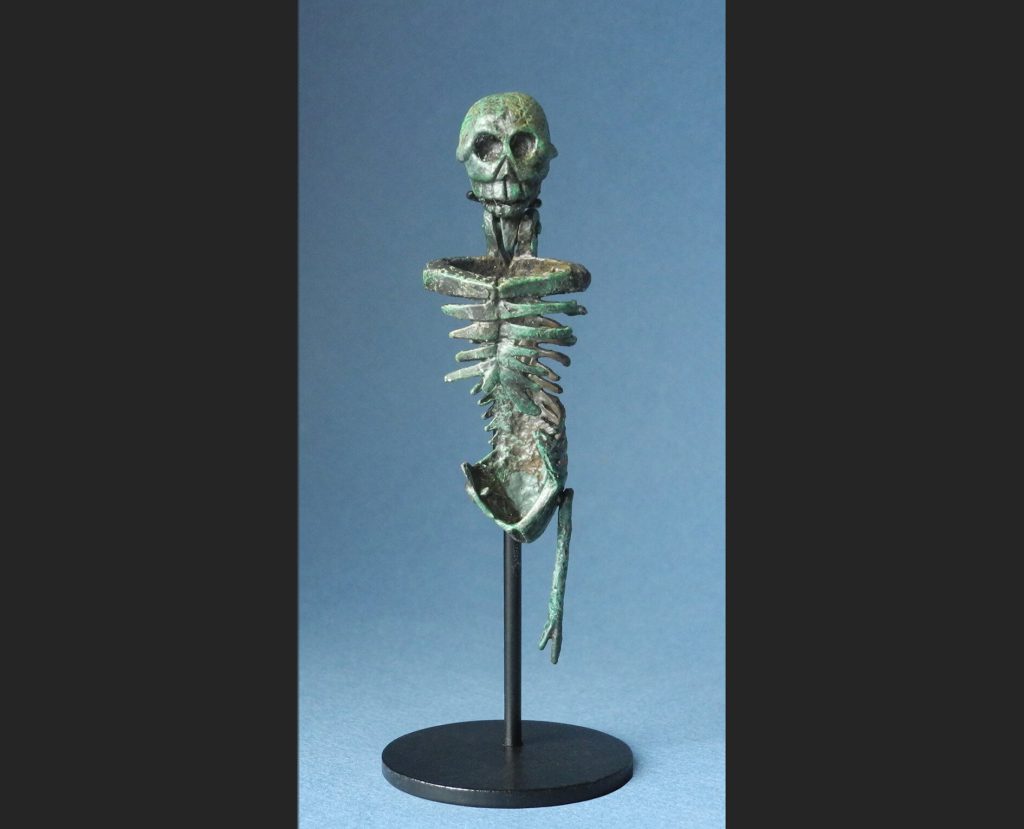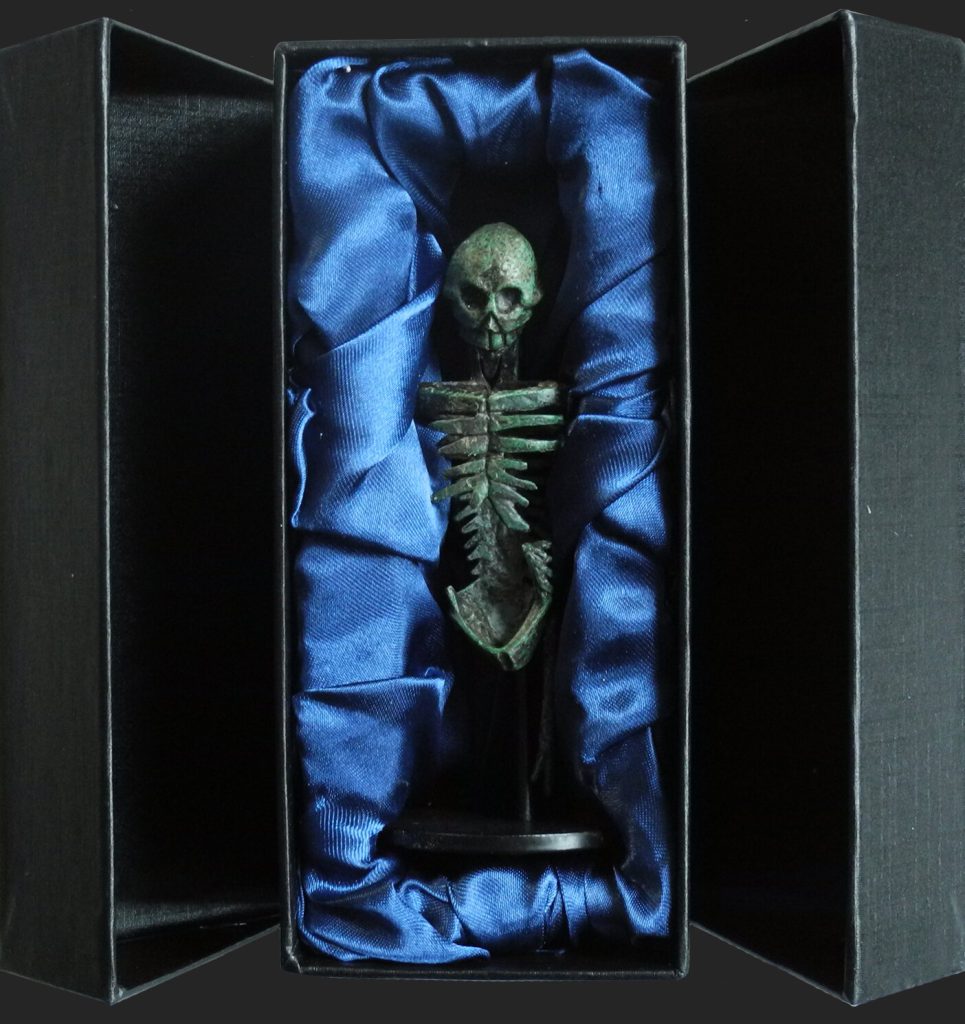Roman miniature skeleton, Larva Convivalis
Made of bronze, a miniature 1st-century Roman articulated skeleton in the collection of the Getty Museum features round eye sockets and a wide, grinning mouth with large upper teeth. Its arms now missing and only the upper part of one leg remaining, the skeleton was known to the Romans as larva convivalis, meaning banquet ghost. It was once made to jump and dance and was a reminder of the brevity of human life and necessity of profiting from the short remaining time. In the Petronius' satirical novel, The Satyricon (A.D. 60s), the crass, nouveau-rich dinner party host Trimalchio, brings out a small skeleton between courses. Trimalchio poses the flexible figurine in various ways and recites a poem to the effect that life should be enjoyed before becoming a skeleton like the one on display. He declares "Alas for us poor mortals. Thus we shall be, after Hades takes us away. Therefore, let us live while it goes well with us".
In total, ten similar skeletons are known, one in silver, one in wood, and the remaining examples in bronze. The unanatomical rendering of the bones, a feature shared by all the skeletons, reveals that artists' lack of scientific accuracy. It was perhaps more important that the bony specters were lively and so the fluid dancing movements of their mobile joints were emphasized.

ROM01
- h. 11 cm. (metal) with brochure in luxury gift box
